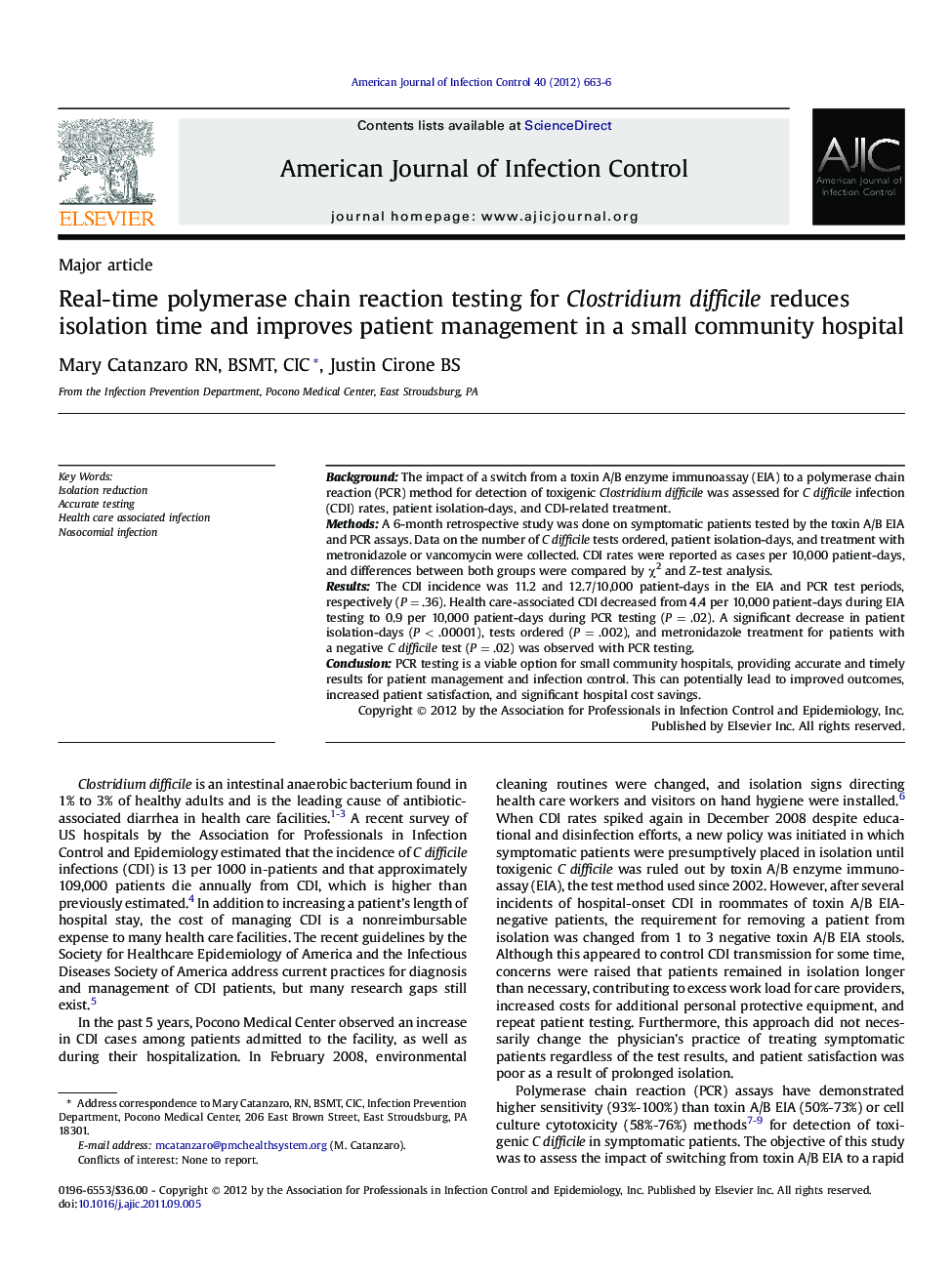| Article ID | Journal | Published Year | Pages | File Type |
|---|---|---|---|---|
| 2637846 | American Journal of Infection Control | 2012 | 4 Pages |
BackgroundThe impact of a switch from a toxin A/B enzyme immunoassay (EIA) to a polymerase chain reaction (PCR) method for detection of toxigenic Clostridium difficile was assessed for C difficile infection (CDI) rates, patient isolation-days, and CDI-related treatment.MethodsA 6-month retrospective study was done on symptomatic patients tested by the toxin A/B EIA and PCR assays. Data on the number of C difficile tests ordered, patient isolation-days, and treatment with metronidazole or vancomycin were collected. CDI rates were reported as cases per 10,000 patient-days, and differences between both groups were compared by χ2 and Z-test analysis.ResultsThe CDI incidence was 11.2 and 12.7/10,000 patient-days in the EIA and PCR test periods, respectively (P = .36). Health care-associated CDI decreased from 4.4 per 10,000 patient-days during EIA testing to 0.9 per 10,000 patient-days during PCR testing (P = .02). A significant decrease in patient isolation-days (P < .00001), tests ordered (P = .002), and metronidazole treatment for patients with a negative C difficile test (P = .02) was observed with PCR testing.ConclusionPCR testing is a viable option for small community hospitals, providing accurate and timely results for patient management and infection control. This can potentially lead to improved outcomes, increased patient satisfaction, and significant hospital cost savings.
